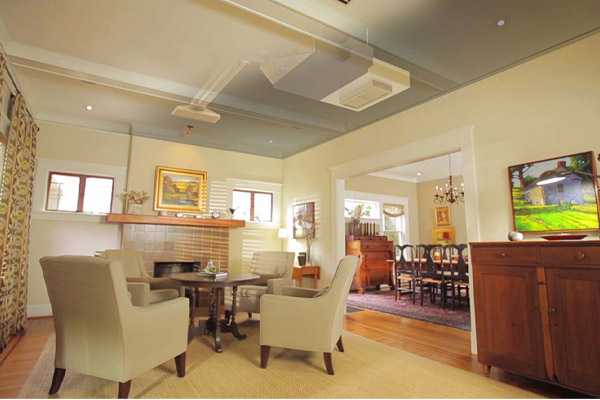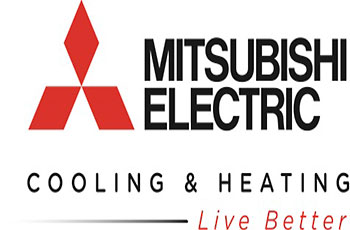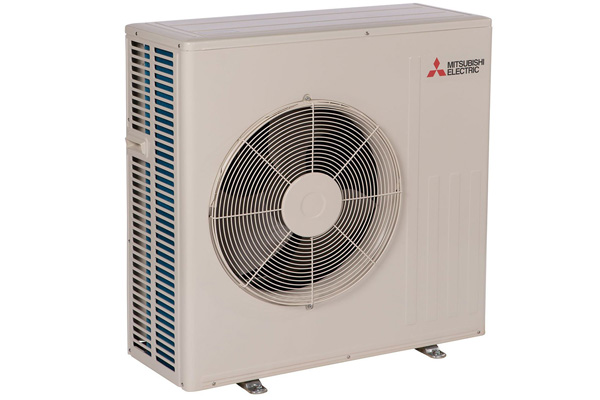Information About Concealed Duct Mini-Split Systems

The most popularly used mini-split is the wall-mounted ductless system. Unfortunately, wall-mounted systems have exposed indoor air handlers. This is not something all homeowners like. It could be because it ruins the aesthetic they were going for in their home. For whatever reason it may be, there is a demand to have the indoor air handlers concealed.
A concealed duct mini-split could be what you need if this is the case. A large part of the indoor air handler is concealed in the crawl space, attic, or dropped ceiling. It uses the existing ducts to ensure the cold or warm air is released to the floor, wall, or ceiling grille in the room. This type of ductless system offers a nearly invisible type of zoned cooling, making it a discreet option as opposed to other ductless systems.
Concealed Duct Mini-Split Systems: What You Need To Know
Contents
Concealed ducts offer superior indoor climate control while remaining hidden. The cold air is distributed throughout the house via the existing ductwork. The air is then released in your home via an inconspicuous ceiling or wall grille. Homeowners can choose the type of grille that will suit individual zones best, making concealed ducts a flexible and powerful cooling equipment.
Concealed ducts are made of various parts that are vital in ensuring that the equipment functions in tiptop shape. For instance, the indoor unit consists of the indoor power supply, communication cable, flexible ducts, diffusers, return air grilles, wired tether controller, and motorized dampers. The indoor unit also has accessories such as the hanger, nut, nut with washer, washer, pipe insulation, flare nut, and fastener.
The outdoor unit, on the other hand, consists of the service cover, front panel, gas pipe, liquid pipe, drain hose, and the outdoor power supply. It has accessories such as the drain plug and the drainage connector. All of these are vital in ensuring that your system works in tiptop shape at all times.
Features of A Concealed Duct Split System

A few key features a concealed duct has includes:
Automatic Changes
The automatic mode lets your concealed switch between cooling and heating modes. This way, the zone remains at a consistent temperature.
Concealed Unit
A concealed duct unit uses short-run ducts. It is a hidden system that can be installed either above or below the room it needs to condition. Only a small air grille can be seen in the room. This way, you are comfortable throughout the year without disturbing your home’s interior design.
Quiet Operation
The indoor air handler of a concealed duct offers whisper-quiet operation. It guarantees that you can go about your daily activities in your home without heating any irritating sounds from your heating and cooling unit.
Remote Control
Concealed ducts also come with a wide range of controllers. You can choose the more common wall-mounted controller. The system could also be controlled via an app on your mobile device. This is an excellent feature when you are almost always out of your home, either because of work commitments or extended vacations. With your system controlled through an app, you can manage your unit from anywhere. It also ensures that you return to a warm home in the winter or a cool home during the hot summer season.
Comfort Control
You are also free to customize your concealed duct by adding accessories to the air grille or the wall-mounted controller. For instance, you can install a temperature sensor that is designed to track any changes in the room’s temperature. It helps your system maintain the precise temperature in the room. You can also add other accessories to ensure that you maximize the comfort your concealed duct can give you.
Other Features
Depending on a unit’s make, model, and brand, here are a few additional features your concealed duct system might have:
- Anti-cold air function
- Adjustable external static pressure
- Convertible return air provision
- Drain pump with float switch
- Fresh air intake provision
- Refrigerant leakage detector
Choosing A Concealed Duct
A concealed duct is an excellent choice if you want an HVAC system that is hidden from view. Only the grille covers are visible as the bulk of the system can be hidden behind the floor or ceiling. It is a perfect solution for homeowners who prioritize aesthetic value. They can make sure that their home’s interior design remains undisrupted with a concealed duct.
Concealed ducts utilize short-run ducts. It is where the conditioned air travels before it is released to the grilles in the zone. If you have existing ductwork and you do not want to tinker with it, then a concealed duct is a good solution. With the use of the current ducts, you can even supply cool air to an adjacent, smaller room. Concealed mini-splits are also an excellent option for heating or cooling spaces that are difficult to do so. These include historic homes, new additions, and rooms like basements and sunrooms.

Concealed Duct Installation
A concealed duct is commonly installed in the attic or crawlspace. However, before you proceed with the installation, you should ensure that the space is well-insulated. If it isn’t, then build a box around the unit. You have to make sure that the exterior is covered and insulated properly to keep condensation from forming.
If you are utilizing the ducts you already have to circulate air in different parts of one room, then ensure that there are transition ducts. Make sure to purchase outlet grilles as well. If you want the unit to have a return air vent, then you should also have a filter in place so that the unit is protected from dust and other debris.
If there are no ducts available, then you can opt to install the unit against the wall’s surface. However, it is necessary to purchase a grille so that your concealed duct is protected. It also gives your system a more finished look.
Choosing to install a concealed duct in your home’s ceiling means ensuring that it can hold twice the weight of the HVAC system. You should also make sure that the unit is not cramped and that the air inlet and outlet are not blocked. Otherwise, future service and maintenance can be a problem. The blockage also means that the airflow wouldn’t reach all parts of the room and might cause uneven temperatures.
Check Out One Of Our Ductless Installation Projects
Ductless Panels Add Heat And AC In An Addition To A Catasauqua PA Home
Conclusion
A concealed duct can be installed anywhere in your home. It allows homeowners to receive comfort and all other benefits a mini-split system has to offer without sacrificing the aesthetic they want.
Once you have decided to install a concealed duct, make sure an HVAC technician assists you. A professional has the tools, knowledge, and years of experience to make the installation quick and easy. They can help you with choosing the best make and model, where is the best place to install it in your home, and even with maintenance. It also guarantees that the installation is completed in line with the state and local code. Get in touch with your local trusted technician and begin the installation process today.
Call R.F. Ohl To Learn More About Ductless Heating & Cooling Systems

If you want to discover what a ductless HVAC system can do for you, call R.F. Ohl. Our NATE-certified technicians will help you determine the type of HVAC system that works best for your needs.
R.F. Ohl is one of the region’s leading full-service HVAC companies. We offer a wide range of HVAC services, from installations and tune-ups to repairs and consultations. We can help you find different approaches and solutions to ensure that our services meet your requirements and budget. Call us today for a free, in-home estimate.
Click here to contact us today or give us a call at (610) 377-1098 if you have any questions.